
If you could change your life over the next 21 days in ways that would positively impact all your tomorrows, would you set aside the time this month to do it?
For the next three weeks, I’m issuing an invitation, a helping hand—a challenge. Join me as I guide you through all 7 major life areas, asking you to make small, but breakthrough changes in each area.
You might decide to:
• Investigate a new job, career or business opportunity
• Clear out the junk food and sugar from your kitchen
• Start taking walks after dinner with your spouse
Whatever dreams you have for your life, for the next three weeks, I’d like to challenge you to choose, then tackle, one thing in each area that you know you must accomplish to arrive at where you want to be.
To start off the 21-Day Challenge, let’s focus on a major stressor for most people: their finances. What could you do tonight after work to start making a major breakthrough in tackling your debt, cutting your expenses, saving for a major purchase, or otherwise lowering your financial stress?
Could you spend an hour to:
• List all your debts, then pay off the smallest one
• Cancel a subscription, meal kit, or service you rarely use
• Research companies and start an investment account
• Identify an unused item and post it for sale online
The concept of a breakthrough goal is something I learned from The Oola Guys – Dr. Dave Braun and Dr. Troy Amdahl, authors of Oola: Find Balance in an Unbalanced World. With so many stress points in life, they say, our lives can get out of balance. But narrowing our focus to smaller goals that are easy to achieve, we can start changing our lives for the better (often permanently).
Are you up for that kind of life change this month? Watch for my posts, take action every day, and see what happens!

Hello Friends!!!!!
Can you believe Thanksgiving is next week? I also turn 51 next week, too!!! Time is sure flying by lately.
When I was sitting down thinking about this I realized that means that if you are like the majority of people (Americans anyhow) you are focusing right now on meal plans for next week, and then moving in to thinking about shopping for Christmas. For many of us the next 5 or so weeks will blow any financial strategy or gains we had, and if you purchase gifts on credit, then you'll be blowing the first few months of next year too. Or if you only make the minimum payment then maybe the next several years of your finances. How depressing.
When I was sitting down thinking about this I realized that means that if you are like the majority of people (Americans anyhow) you are focusing right now on meal plans for next week, and then moving in to thinking about shopping for Christmas. For many of us the next 5 or so weeks will blow any financial strategy or gains we had, and if you purchase gifts on credit, then you'll be blowing the first few months of next year too. Or if you only make the minimum payment then maybe the next several years of your finances. How depressing.
And that doesn't leave room for any emergencies. Like this guy....
 This is Eggroll. He's a 13ish year old cat who needs surgery next week. And not cheap surgery, either. Like $1,000+ surgery. Right before Christmas and my upcoming vacation!!!! Aaaaccckkkk!!!!
This is Eggroll. He's a 13ish year old cat who needs surgery next week. And not cheap surgery, either. Like $1,000+ surgery. Right before Christmas and my upcoming vacation!!!! Aaaaccckkkk!!!!
 This is Eggroll. He's a 13ish year old cat who needs surgery next week. And not cheap surgery, either. Like $1,000+ surgery. Right before Christmas and my upcoming vacation!!!! Aaaaccckkkk!!!!
This is Eggroll. He's a 13ish year old cat who needs surgery next week. And not cheap surgery, either. Like $1,000+ surgery. Right before Christmas and my upcoming vacation!!!! Aaaaccckkkk!!!!Here's the thing. Six months ago I wouldn't have been able to afford this surgery and would have had to either leave him in pain, pay it on Care credit or on a credit card (which I don't even have). Or worse, be forced to maybe even make the most difficult decision. The one you never want to make due to money when the pet still has so much living left to do.
But I'm lucky. In the past 6 months I've been able to build up an emergency fund to cover this cost, still be able to buy all the Christmas gifts I want, save for my two upcoming trips (one to Australia next year that will be expensive), invest in my future, and still have fun along the way. And pay for it all with cash. And I didn't get a job making more money, either. I'm doing this with my current income.
So what changed? I found a plan that takes the emotion out of money and helped me finally get my finances in order. Yep, it took me 50 years to finally figure it out. Yes - I am embarrassed about that, but better late than never right?
And it is not rocket science, and it doesn't matter what your income level is. This system can help you, I promise.
So, how are you going to finish out these next 6 weeks of the year? Worrying about money, dreading the thought of the end of January when the credit card bills come due, or worried about what you'll do if the car breaks down or the cat needs surgery?
And it is not rocket science, and it doesn't matter what your income level is. This system can help you, I promise.
So, how are you going to finish out these next 6 weeks of the year? Worrying about money, dreading the thought of the end of January when the credit card bills come due, or worried about what you'll do if the car breaks down or the cat needs surgery?
There really is hope. You can grab the full program here
Green Gap
GREEN GAP
and it even includes monthly coaching with the creator, where you can ask questions and dive even deeper in to how the system works. You too can become a money machine.
I'm sure you are thinking? Great. But I'm broke and a system like this probably costs a fortune, especially with those included monthly coaching/Q&A sessions. But guess what? It doesn't. It's a one-time fee of $197 or $147 if you are already an Oola Member or Ambassador. So....are you ready to invest in yourself and your financial future?
Green Gap
GREEN GAP
and it even includes monthly coaching with the creator, where you can ask questions and dive even deeper in to how the system works. You too can become a money machine.
I'm sure you are thinking? Great. But I'm broke and a system like this probably costs a fortune, especially with those included monthly coaching/Q&A sessions. But guess what? It doesn't. It's a one-time fee of $197 or $147 if you are already an Oola Member or Ambassador. So....are you ready to invest in yourself and your financial future?
If you want to see more of Eggroll check out this Facebook Live I did with him today: https://www.facebook.com/1641691034/videos/861985131117602/
Reach out if you have questions. I'd love to help you find the freedom I've finally found after all these years.
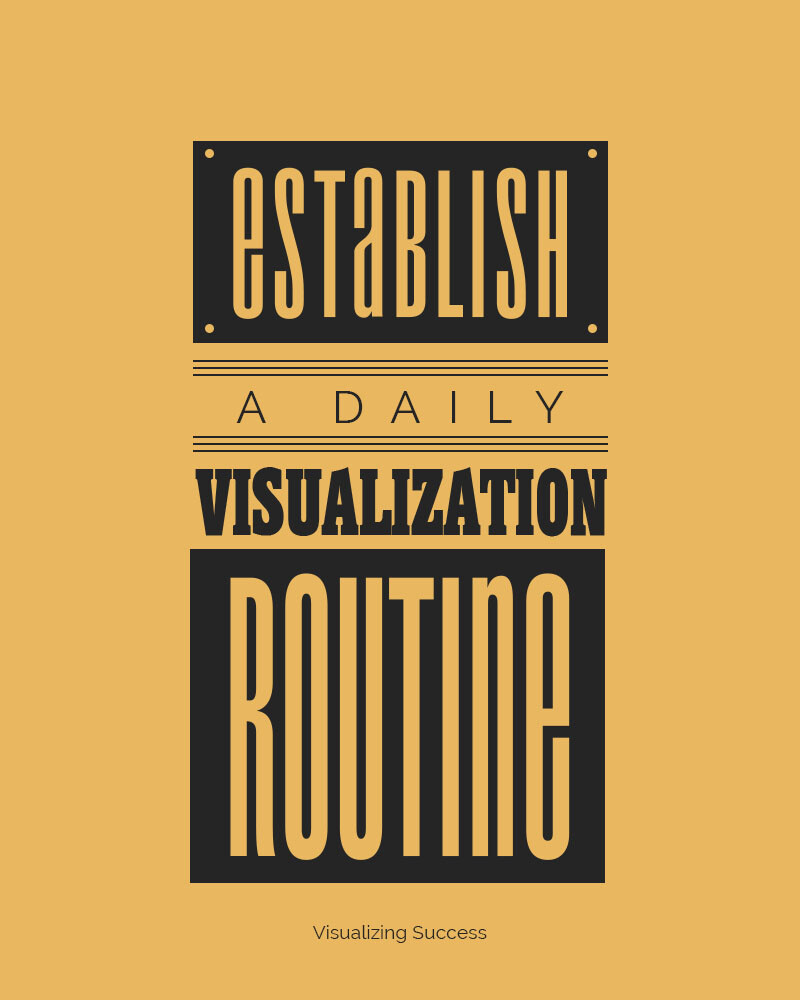
Visualization can be the secret weapon in turning your dreams into reality. You already have the power to achieve what you want in life; motivation, strategy, and the Big Idea are already there, locked in your subconscious mind. Take just ten minutes every day to unlock that power and start to move towards your goals.
1. Harness the Power of your Subconscious
You may not realize how powerful your subconscious is in determining whether or not you succeed in life. A negative mindset can act as a drag, stopping you from imagining your dream life and going for it. It will remind you of past failures and tell you that gaining success and wealth is hard work and painful, even impossible.
Studies have shown that you can rewire your mindset by programming the Reticular Activating System in your brain to select for positivity and success. The RAS acts a bit like an email folder, getting you to focus on what’s important to you. If you tell it to prioritize information that will feed your success, you will have your subconscious mind working for you, not against you.
2. Make Visualization a Habit
Just ten minutes a day of visualizing your future life is enough to keep the momentum going and your motivation high. Make the visualization habit easy by doing it at the same time and place each day. The ten minutes before you get up and before you go to sleep are the perfect times to practice visualization. You’re relaxed, unlikely to be interrupted, and in the ideal state of mind to have an impactful visualization.
Bring to mind every detail of your future successful life, How does it feel? What can you see, feel, hear, and taste? What are you wearing? What emotions are you feeling? Make it as real and detailed as possible.
3. Be present
You can practice visualization not just by thinking about the future but also being fully present in the here and now. Placing your happiness in the future means you miss out on all the good things in your life right now. And that can be demotivating and lead to a drop in positivity.
Don’t postpone happiness. Think of all the things in your life that you are grateful for right now. Celebrate your successes and your gifts and use them to fuel your ambition for more and better.
See yourself working your way along the map and ticking off your successes as you get closer to achieving what you want. Mark every success, no matter how small and keep your energy and motivation high.
Did you miss the first post in this series? Check it out HERE.

You’ve probably heard about visualizing as a personal development tool. Or maybe your sports coach used visualization to help motivate you and your team. But did you know that there’s a scientific basis for how visualization works? Neuroscientists have found that visualization actually changes the brain and can set you on the road to success.
Rewire Your Brain
You may not realize it, but there is a powerful part of your brain that already prioritizes what you need to know. The Reticular Activating System (RAS) protects your brain from being overwhelmed by the millions of bits of information that flood it every day. It acts as an email filter, discarding what you don’t need to know and prioritizing important things. The RAS is influenced both by your childhood messages and what you ‘tell’ it that you want to know. Ever noticed how, once you decide you want a new car, you see that model of car everywhere? That’s your RAS saying ‘look at this’!
Using visualization enables you to hack your mindset and refocus your thoughts from negative doubts to a clear positive vision of where you want to be. Instead of anxiety about where you are now, you can visualize an alternative reality and hack your RAS to start priming you for success. Keeping your goals literally top of mind will help you focus on achieving them.
Harness Your Brain Chemistry
Your brain works with a complex system of hormones and other chemicals. You can manipulate things like your dopamine feedback loops to focus on successful behaviors. That good feeling when you win is all about the rush of dopamine that floods your brain as a kind of chemical reward. This is what keeps you motivated to try and achieve bigger and better goals.
You can harness this dopamine reward system by stretching your challenges. Aim to get two new clients this week, three the next, and so on. You are feeding and encouraging your motivation by priming your dopamine loops. And as a bonus, it makes the work more fun!
Use Your Memories
Scientists have found that you can edit your memories to focus on the good ones. Instead of remembering past bad experiences and then feeling less confident, you can bolster your motivation by remembering past successes.
You can take the sting out of bad memories by playing them over and over in your mind, visualizing them getting smaller and smaller until they disappear. Conversely, you can turn up the color and volume on good memories. Make them IMAX sized in your mind and enjoy how they make you feel. Use that vision to fuel your motivation.
Like what you learned here? Check out my other blog posts or follow me on Facebook.
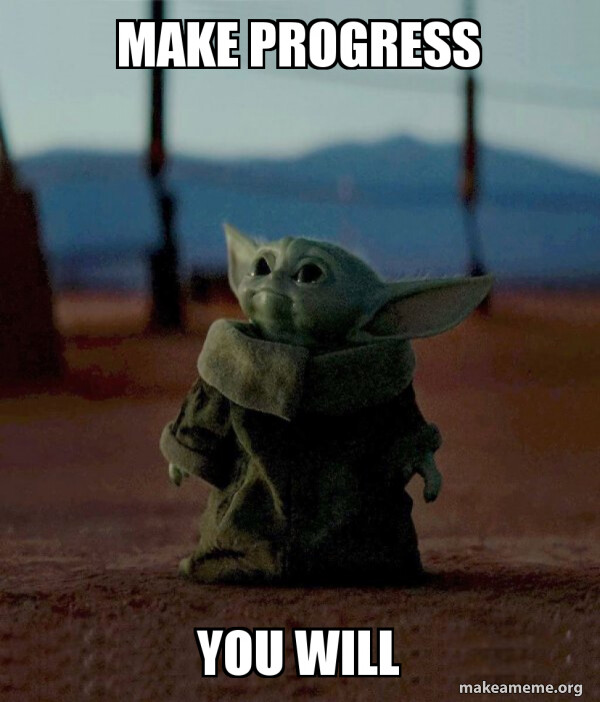
Make Progress Every Single Day And You’ll Beat Procrastination For Good
It’s hard to believe but we are coming to the end of our seven-week challenge to get off your butt and finally beat procrastination. I hope you’ve been following along and more importantly that you’ve been making progress on at least one of the things you’ve been procrastinating on. We end today with the most important piece of advice and the main lesson I want you to take away from all this.
Make progress every single day!
Of course, that’s easier said than done. That’s why I’m leaving you today with three simple hacks or strategies to help you. Give them a try and see if you can’t get into the habit of being productive every day instead of procrastinating.
Plan For It
It’s easy to make progress every day when you know exactly what you should be working on next. Make a plan and then decide what you will do each day of the week. Write it down in a planner and adjust daily as needed. In the morning, you can see at-a-glance what it is you should be doing. Then get to work on it first thing before the day gets away from you. I find it helpful to have my planner sitting right in front of me at my desk, keeping me on track.
Don’t Break the Chain
There’s something to be said about a chain or a streak. Record every day you don’t procrastinate on something. You can mark it on a monthly calendar, or create a chain of sticky notes, stickers, or even one of those paper chains you used to make in preschool. The goal is simple. Don’t break the chain. Once you have a few days under your belt, you’ll be motivated to go the extra mile and do that one thing you need to do to avoid breaking the streak.
Check In with Yourself
As you start to make progress on the things you know you need to be doing, you should feel your anxiety reduce. Instead, your will feel your confidence go up. Don’t be surprised to feel proud of your accomplishments. Instead use those feelings to propel you forward to more procrastination free days. Procrastination is a habit. It’s something you learned to do, which means it’s something you can unlearn. Stick with it, make progress every day, and enjoy those feelings of accomplishment.
It’s hard to believe but we are coming to the end of our seven-week challenge to get off your butt and finally beat procrastination. I hope you’ve been following along and more importantly that you’ve been making progress on at least one of the things you’ve been procrastinating on. We end today with the most important piece of advice and the main lesson I want you to take away from all this.
Make progress every single day!
Of course, that’s easier said than done. That’s why I’m leaving you today with three simple hacks or strategies to help you. Give them a try and see if you can’t get into the habit of being productive every day instead of procrastinating.
Plan For It
It’s easy to make progress every day when you know exactly what you should be working on next. Make a plan and then decide what you will do each day of the week. Write it down in a planner and adjust daily as needed. In the morning, you can see at-a-glance what it is you should be doing. Then get to work on it first thing before the day gets away from you. I find it helpful to have my planner sitting right in front of me at my desk, keeping me on track.
Don’t Break the Chain
There’s something to be said about a chain or a streak. Record every day you don’t procrastinate on something. You can mark it on a monthly calendar, or create a chain of sticky notes, stickers, or even one of those paper chains you used to make in preschool. The goal is simple. Don’t break the chain. Once you have a few days under your belt, you’ll be motivated to go the extra mile and do that one thing you need to do to avoid breaking the streak.
Check In with Yourself
As you start to make progress on the things you know you need to be doing, you should feel your anxiety reduce. Instead, your will feel your confidence go up. Don’t be surprised to feel proud of your accomplishments. Instead use those feelings to propel you forward to more procrastination free days. Procrastination is a habit. It’s something you learned to do, which means it’s something you can unlearn. Stick with it, make progress every day, and enjoy those feelings of accomplishment.

Listen To Your Inner Voice And Change That Dialogue
Something we haven’t talked about yet is that little voice in our head that either encourages us to go do something else - thus procrastinating, or the other one… the critical one… the one that tells us how much we suck because we didn’t get the things done we set out to do.
Why is it important to listen to those voices? Because they have an impact on your life both on a conscious and a subconscious level. Let’s start with that negative voice because I think in the long run it’s the most destructive of the two. Back on day one of this seven week challenge to beat procrastination we talked about the importance of forgiving yourself. To quickly recap, it does you no good to beat yourself up over past procrastination and that you should expect to “fail” by procrastinating again here and there. Nobody is perfect. We all have good days and bad days. The important part is to show up and try your best.
That little negative voice in your head doesn’t help you do that. Become aware of it and when you hear it, defuse it. You can do this by responding to it out loud or in writing (via a journal). Or go up and do something else. Do whatever it takes to silence that voice. A great option is to prove it wrong by doing something productive. Over time that voice will speak up less and less unless you indulge it by paying attention to it and letting it ruin your day.
Next it’s time to tackle the voice in your head that tells you it’s much more fun to do just about anything other than what you should be doing. We all have that voice. It’s why we come up with terms like procrasticleaning and procrasticrafting. We can get pretty innovative when it comes to doing anything but the thing we don’t want to work on and that little voice is feeding us suggestions and cheering us on.
The best way to diffuse this particular voice into something more productive is with “yes, and” statements. “Yes, playing video games sounds like a lot of fun and I’m going to play for an hour or so after I get this task done.” Use the suggestions this voice gives you as bribes if they sound like something fun. Ignore them otherwise, or put them off until tomorrow.
Something we haven’t talked about yet is that little voice in our head that either encourages us to go do something else - thus procrastinating, or the other one… the critical one… the one that tells us how much we suck because we didn’t get the things done we set out to do.
Why is it important to listen to those voices? Because they have an impact on your life both on a conscious and a subconscious level. Let’s start with that negative voice because I think in the long run it’s the most destructive of the two. Back on day one of this seven week challenge to beat procrastination we talked about the importance of forgiving yourself. To quickly recap, it does you no good to beat yourself up over past procrastination and that you should expect to “fail” by procrastinating again here and there. Nobody is perfect. We all have good days and bad days. The important part is to show up and try your best.
That little negative voice in your head doesn’t help you do that. Become aware of it and when you hear it, defuse it. You can do this by responding to it out loud or in writing (via a journal). Or go up and do something else. Do whatever it takes to silence that voice. A great option is to prove it wrong by doing something productive. Over time that voice will speak up less and less unless you indulge it by paying attention to it and letting it ruin your day.
Next it’s time to tackle the voice in your head that tells you it’s much more fun to do just about anything other than what you should be doing. We all have that voice. It’s why we come up with terms like procrasticleaning and procrasticrafting. We can get pretty innovative when it comes to doing anything but the thing we don’t want to work on and that little voice is feeding us suggestions and cheering us on.
The best way to diffuse this particular voice into something more productive is with “yes, and” statements. “Yes, playing video games sounds like a lot of fun and I’m going to play for an hour or so after I get this task done.” Use the suggestions this voice gives you as bribes if they sound like something fun. Ignore them otherwise, or put them off until tomorrow.
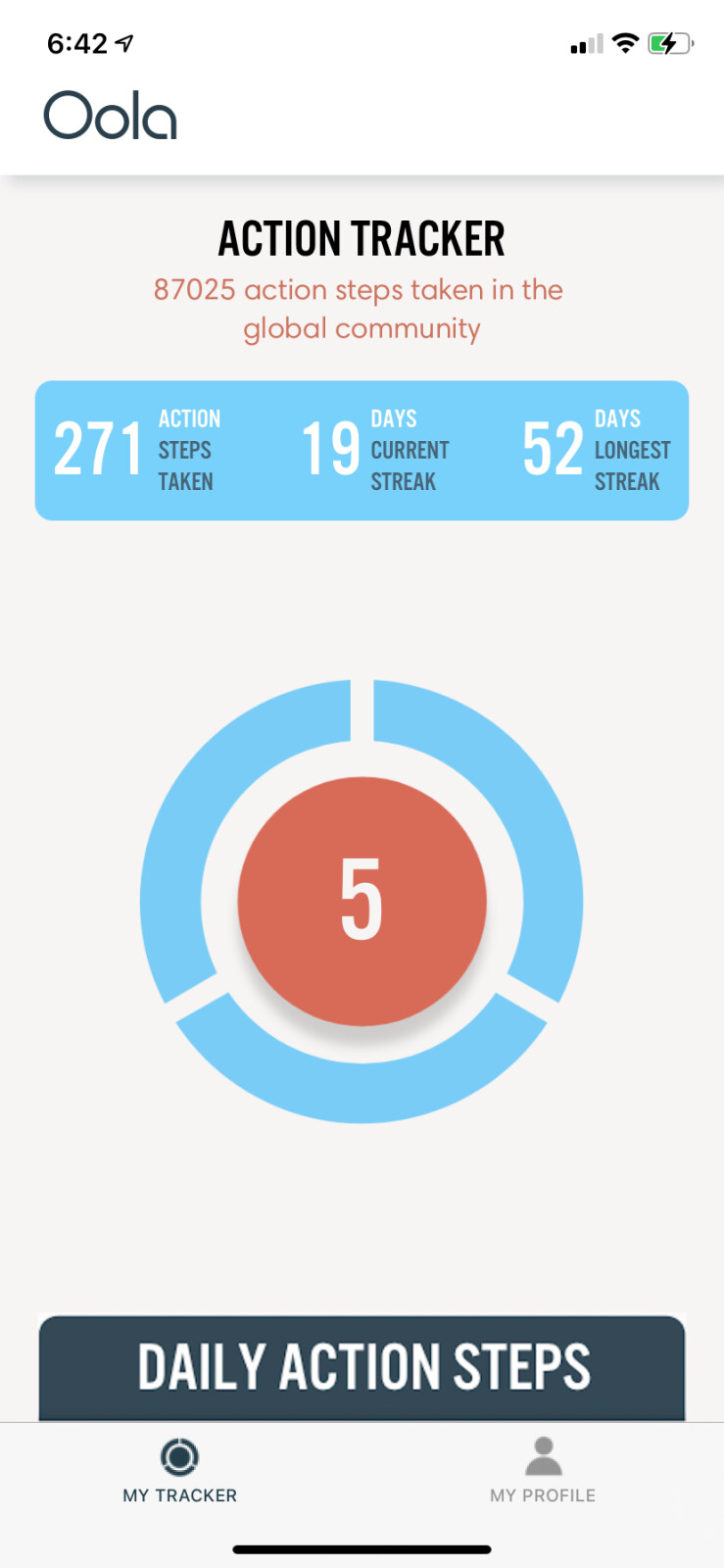
Old Habits Are Hard To Break - Accountability Is Key To Beating Procrastination
Beating procrastination can be hard. We do well for a few days, but then old habits set back in, or we get frustrated with our lack of apparent progress. Nothing goes fast enough. If you face a small setback at this point, it may be enough to stop working on what you wanted to accomplish in the first place. Thankfully there’s something you can do to greatly improve your chances of success. Accountability.
Track Your Progress
Start by tracking what you do. You can do this via a simple habit tracker. Use a box for each day of the week and check it off or fill it in when you do the thing you told yourself you would do. Keep tracking until it becomes a habit or until the project is done. Ready to try the Oola Framework and Activity Tracker? You won't regret it and there is even a 30-day money back guarantee.
For larger projects that you may or may not work on a daily basis, it helps to write down your goal and then break it into milestones. Record your progress and how much closer you’re inching to each of your goals.
Make Daily To-Do Lists
Write out a list of everything you want to get done for the day. I find it helpful to do this the day before. Play around with how many items you put on that list. You don’t want it to overwhelm you, but you do want to challenge yourself to get more done. The list holds you accountable because you can see in black and white if you procrastinated or not.
Tell Someone About Your Plans
If there’s something you’ve been struggling to get done, tell someone else about your plans to finally tackle it. Call a friend, tell your spouse, or announce it on social media. Encourage the people you’re sharing with to check back with you on how you did. It may be the little extra push you need to stop procrastinating.
Find An Accountability Buddy
Last but not least, find someone else who’s procrastinating and start holding each other accountable. This could be as simple as checking in once in the morning to declare what you each want to get done, and then again at the end of the day to see what happened. Knowing someone else is right there with you can be super motivating. Reach out if you want to join our Inner Circle.
Give each of these procrastination beating strategies a try and see which ones give you the best results. Like anything else, procrastinating is a habit and you can get out of it and turn yourself into the motivated and productive version of yourself you want to be.
Beating procrastination can be hard. We do well for a few days, but then old habits set back in, or we get frustrated with our lack of apparent progress. Nothing goes fast enough. If you face a small setback at this point, it may be enough to stop working on what you wanted to accomplish in the first place. Thankfully there’s something you can do to greatly improve your chances of success. Accountability.
Track Your Progress
Start by tracking what you do. You can do this via a simple habit tracker. Use a box for each day of the week and check it off or fill it in when you do the thing you told yourself you would do. Keep tracking until it becomes a habit or until the project is done. Ready to try the Oola Framework and Activity Tracker? You won't regret it and there is even a 30-day money back guarantee.
For larger projects that you may or may not work on a daily basis, it helps to write down your goal and then break it into milestones. Record your progress and how much closer you’re inching to each of your goals.
Make Daily To-Do Lists
Write out a list of everything you want to get done for the day. I find it helpful to do this the day before. Play around with how many items you put on that list. You don’t want it to overwhelm you, but you do want to challenge yourself to get more done. The list holds you accountable because you can see in black and white if you procrastinated or not.
Tell Someone About Your Plans
If there’s something you’ve been struggling to get done, tell someone else about your plans to finally tackle it. Call a friend, tell your spouse, or announce it on social media. Encourage the people you’re sharing with to check back with you on how you did. It may be the little extra push you need to stop procrastinating.
Find An Accountability Buddy
Last but not least, find someone else who’s procrastinating and start holding each other accountable. This could be as simple as checking in once in the morning to declare what you each want to get done, and then again at the end of the day to see what happened. Knowing someone else is right there with you can be super motivating. Reach out if you want to join our Inner Circle.
Give each of these procrastination beating strategies a try and see which ones give you the best results. Like anything else, procrastinating is a habit and you can get out of it and turn yourself into the motivated and productive version of yourself you want to be.

Don’t Let Things or People Distract You into Procrastinating
You wake up in the morning motivated and ready to tackle whatever it is you’ve been procrastinating on. Or maybe you’re excited about a new project. You drink your coffee, get dressed, and get ready to get to work. Then something happens.
Maybe you open your email, or worse Facebook and get sucked into spending the next few hours on your computer. Or maybe a good friend calls and asks you to go shopping. Or you get an alert that your favorite TV show dropped on Netflix. It doesn’t matter what it is, the point is that there are people and things that will try to distract you into procrastinating. If you let them.
There’s a simple strategy you can use to keep this from happening. It’s to make the important project you’ve been procrastinating on a priority and working on it first thing every morning. The whole process starts the night before. Before you call it a day, sit down and make a simple plan for what you want to get done the next day. Identify the three most important tasks. This will be things that start to move the needle. Maybe they are all focused on one main project, maybe it’s several things you know you should be getting done.
Write these three things down, or better yet add them to your Oola Activity Tracker and you’ll be set!!! They don’t have to be anything big. In fact, I find it helpful if they are all items I can take care of in an hour or less. When you get up in the morning, or get to your office, look at your list and work on these three most important tasks before you do anything else. Don’t look at email. Don’t start playing on your phone. If possible don’t even answer the phone or attend meetings before these three tasks are taken care of. Make them your number one priority.
This alone will make a huge difference in how your day goes, how productive you are, and it of course keeps you from procrastinating on those projects. Putting them off until the end of the day when you’re too tired to do anything is no longer an option.
Aside from that, simply being more aware of what things, devices, and people tempt you to procrastinate is helpful. When you find yourself putting something off, look back and see if you can pinpoint what caused it. Then take action towards preventing it from happening in the future.
Maybe you open your email, or worse Facebook and get sucked into spending the next few hours on your computer. Or maybe a good friend calls and asks you to go shopping. Or you get an alert that your favorite TV show dropped on Netflix. It doesn’t matter what it is, the point is that there are people and things that will try to distract you into procrastinating. If you let them.
There’s a simple strategy you can use to keep this from happening. It’s to make the important project you’ve been procrastinating on a priority and working on it first thing every morning. The whole process starts the night before. Before you call it a day, sit down and make a simple plan for what you want to get done the next day. Identify the three most important tasks. This will be things that start to move the needle. Maybe they are all focused on one main project, maybe it’s several things you know you should be getting done.
Write these three things down, or better yet add them to your Oola Activity Tracker and you’ll be set!!! They don’t have to be anything big. In fact, I find it helpful if they are all items I can take care of in an hour or less. When you get up in the morning, or get to your office, look at your list and work on these three most important tasks before you do anything else. Don’t look at email. Don’t start playing on your phone. If possible don’t even answer the phone or attend meetings before these three tasks are taken care of. Make them your number one priority.
This alone will make a huge difference in how your day goes, how productive you are, and it of course keeps you from procrastinating on those projects. Putting them off until the end of the day when you’re too tired to do anything is no longer an option.
Aside from that, simply being more aware of what things, devices, and people tempt you to procrastinate is helpful. When you find yourself putting something off, look back and see if you can pinpoint what caused it. Then take action towards preventing it from happening in the future.
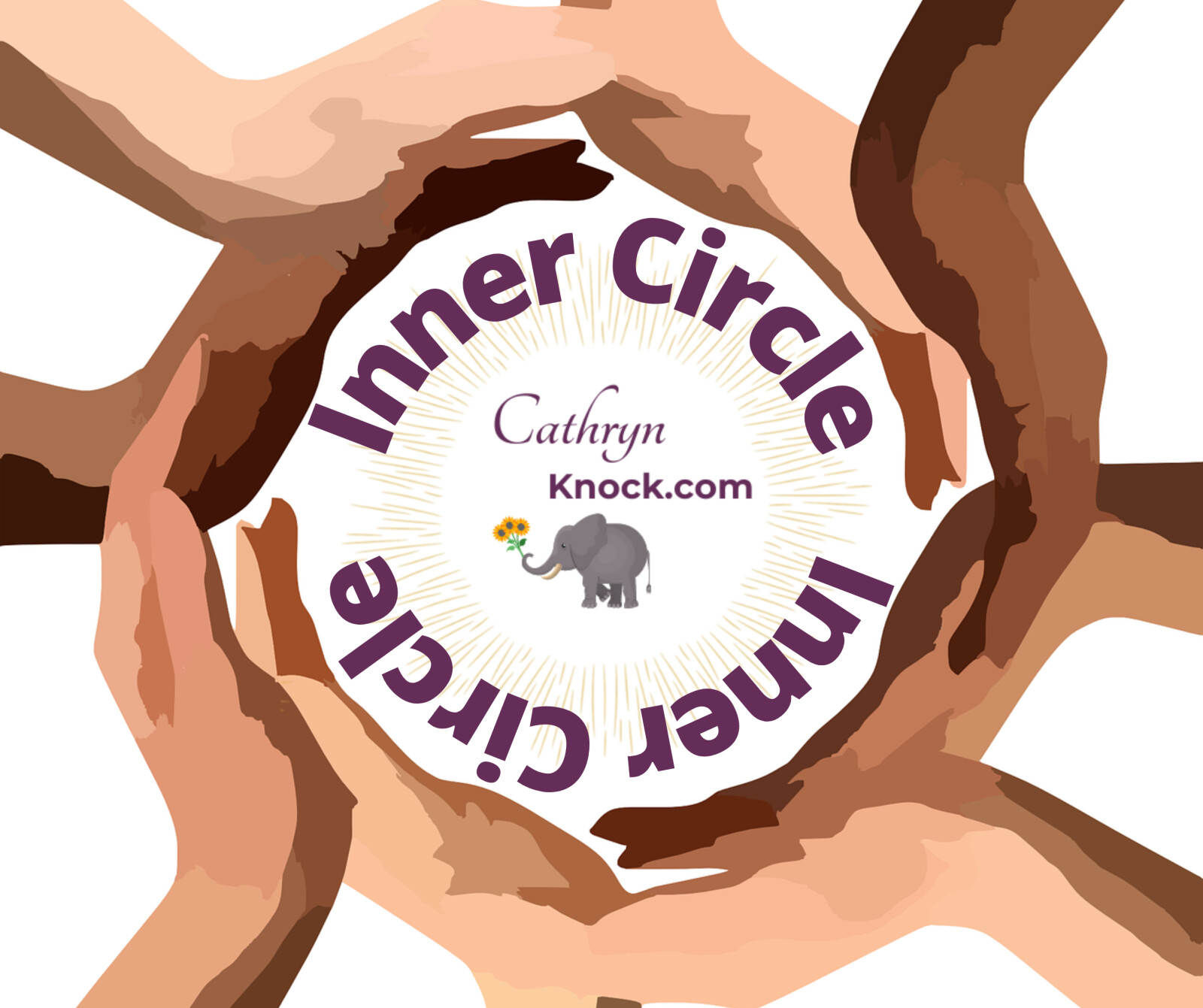
7 Hacks To Motivate Yourself To Make Progress
Ready to stop procrastinating and make some progress? Try one of these seven simple hacks to motivate yourself into action. Give them each a try over the coming days and weeks and find the ones that make the biggest difference for you. Whenever you find yourself procrastinating, come back to this list and employ one or several of these hacks. Your productivity will soar.
Tip #1: Pick Something Small
One of the big reasons we procrastinate is because something feels overwhelming. There’s too much to do, so we choose to forget about it for a little while. It’s a coping mechanism, just not a very productive one. Instead, pick one thing, something small that you can do right now to move you in the right direction. This creates momentum and forces you to take action.
Tip #2: Set A Time and Go
Another hack that works like a charm is to set a timer. Your phone has one built in, as do most smart watches. Set it for fifteen or twenty minutes and chip away at a task you’ve been procrastinating on. This works just as well for declutteingr your closet as it does for filling out those dreaded expense reports. If twenty minutes feels too long, start with ten. Again, the goal is to start and do something.
Tip #3: Bribe Yourself
There’s nothing wrong with bribing yourself if that’s what motivates you. Work on a home improvement project for an hour and then watch an episode of your favorite show. Or promise yourself a new gadget or pair of shoes when you finish painting the living room. Come up with something that motivates you and go for it. Remind yourself of the prize at the end of the project whenever you’re tempted to put things off for another day.
Tip #4: Find an Accountability Partner
Find someone else who’s either trying to be more productive or beat procrastination themselves. Check in with each other daily. Share what you want to accomplish and what you will get done today. Knowing you have to report to someone else makes you take action. It’s also motivating to see the other person do the same. Try it. I have an Inner Circle that I meet with weekly, and we keep each other accountable. Want in? Message me and I’ll give you the details.
Tip #5: Measure Your Progress
When you’re working on something long-term like losing thirty pounds for example, it can be tempting to procrastinate because it doesn’t seem like you’re making much progress. Instead, prove to yourself that you are getting closer and closer by tracking or measuring it. Make a chart, use a spreadsheet, keep a journal. Find a way to measure your progress and use it to motivate yourself to keep going.
Tip #6: Remind Yourself of Your Why
There’s a reason you’ve decided to do that thing you keep putting off. Think about why you want to get it done. Is it so you get your tax refund? So you can run around with the kids? So you can find the clothes you actually want to wear? Find out your why. Write it down and then keep it front and center. Look at it every day before you get ready to get to work.
Tip #7: Just Start
I've saved the best for last. It's the easiest but also the most powerful. Hear this. Just get started. That's right, sometimes all you have to do is just get moving in the right direction. Do something. Do anything. Even if it's something super small. You get over that initial hump and start to build some momentum.
Ready to stop procrastinating and make some progress? Try one of these seven simple hacks to motivate yourself into action. Give them each a try over the coming days and weeks and find the ones that make the biggest difference for you. Whenever you find yourself procrastinating, come back to this list and employ one or several of these hacks. Your productivity will soar.
Tip #1: Pick Something Small
One of the big reasons we procrastinate is because something feels overwhelming. There’s too much to do, so we choose to forget about it for a little while. It’s a coping mechanism, just not a very productive one. Instead, pick one thing, something small that you can do right now to move you in the right direction. This creates momentum and forces you to take action.
Tip #2: Set A Time and Go
Another hack that works like a charm is to set a timer. Your phone has one built in, as do most smart watches. Set it for fifteen or twenty minutes and chip away at a task you’ve been procrastinating on. This works just as well for declutteingr your closet as it does for filling out those dreaded expense reports. If twenty minutes feels too long, start with ten. Again, the goal is to start and do something.
Tip #3: Bribe Yourself
There’s nothing wrong with bribing yourself if that’s what motivates you. Work on a home improvement project for an hour and then watch an episode of your favorite show. Or promise yourself a new gadget or pair of shoes when you finish painting the living room. Come up with something that motivates you and go for it. Remind yourself of the prize at the end of the project whenever you’re tempted to put things off for another day.
Tip #4: Find an Accountability Partner
Find someone else who’s either trying to be more productive or beat procrastination themselves. Check in with each other daily. Share what you want to accomplish and what you will get done today. Knowing you have to report to someone else makes you take action. It’s also motivating to see the other person do the same. Try it. I have an Inner Circle that I meet with weekly, and we keep each other accountable. Want in? Message me and I’ll give you the details.
Tip #5: Measure Your Progress
When you’re working on something long-term like losing thirty pounds for example, it can be tempting to procrastinate because it doesn’t seem like you’re making much progress. Instead, prove to yourself that you are getting closer and closer by tracking or measuring it. Make a chart, use a spreadsheet, keep a journal. Find a way to measure your progress and use it to motivate yourself to keep going.
Tip #6: Remind Yourself of Your Why
There’s a reason you’ve decided to do that thing you keep putting off. Think about why you want to get it done. Is it so you get your tax refund? So you can run around with the kids? So you can find the clothes you actually want to wear? Find out your why. Write it down and then keep it front and center. Look at it every day before you get ready to get to work.
Tip #7: Just Start
I've saved the best for last. It's the easiest but also the most powerful. Hear this. Just get started. That's right, sometimes all you have to do is just get moving in the right direction. Do something. Do anything. Even if it's something super small. You get over that initial hump and start to build some momentum.

Set A Goal - Write It Down - Get Started
Getting over procrastination takes action. Of course that is easier said than done. Today I'm going to share a simple three-step process with you that will help you get off your butt and get more done than you ever thought possible.
It all starts with a goal. You have to know what it is you want to accomplish. If you don't know what your goal is, it's hard to know what you should be doing first or what you should be doing right now to move in the right direction. So what do we do instead? Anything other than the work we know needs to get done.
Your goal is simply putting what you know you need to get done into words. A good goal has defined parameters and a set deadline. That doesn't have to be complicated. Here's a simple goal we all strive to accomplish. We have to file our taxes by April 15th. You have a pretty good idea of what paperwork you need, what forms you need to fill out, and where you need to turn them in. You also know what your deadline is. In other words, you have a well-defined goal when it comes to filing your income taxes. And yes, I realized most of us still procrastinate when it comes to this particular task. That's why the remaining steps are just as important as the first one. For now I want you to think about one thing you need to get done and turn it into a goal.
Write it down. I don’t care if you find a random scrap of paper, use your favorite notebook, or type a note to yourself on your phone. The important part is that you put your goal into writing. This does two things. First of all, it helps you clarify what your goal is. You have to get pretty specific when you try to put what you want or need to do into words. Secondly, writing it down gives you something to look back on. It serves as a reminder and as a tool that you can use when you are tempted to procrastinate.
Last but not least, it’s time to get started. That’s often the hardest part, isn’t it? You’re tempted to skip your workout until you lace up your shoes and get started. Once you’re off and running, it’s much easier to keep going. Once you have your goal written down, think about something you can do right now to move you in the right direction. Go do that. Then come back and do something else. Each morning, start by looking at your goal and challenge yourself to take action. Before you know it, you will have made some serious progress. And you’re starting to beat procrastination.
What goals are you going to commit to for this month? How about for the rest of 2021? What about in the next year? Let me know and I'll help you stay accountable.
Getting over procrastination takes action. Of course that is easier said than done. Today I'm going to share a simple three-step process with you that will help you get off your butt and get more done than you ever thought possible.
It all starts with a goal. You have to know what it is you want to accomplish. If you don't know what your goal is, it's hard to know what you should be doing first or what you should be doing right now to move in the right direction. So what do we do instead? Anything other than the work we know needs to get done.
Your goal is simply putting what you know you need to get done into words. A good goal has defined parameters and a set deadline. That doesn't have to be complicated. Here's a simple goal we all strive to accomplish. We have to file our taxes by April 15th. You have a pretty good idea of what paperwork you need, what forms you need to fill out, and where you need to turn them in. You also know what your deadline is. In other words, you have a well-defined goal when it comes to filing your income taxes. And yes, I realized most of us still procrastinate when it comes to this particular task. That's why the remaining steps are just as important as the first one. For now I want you to think about one thing you need to get done and turn it into a goal.
Write it down. I don’t care if you find a random scrap of paper, use your favorite notebook, or type a note to yourself on your phone. The important part is that you put your goal into writing. This does two things. First of all, it helps you clarify what your goal is. You have to get pretty specific when you try to put what you want or need to do into words. Secondly, writing it down gives you something to look back on. It serves as a reminder and as a tool that you can use when you are tempted to procrastinate.
Last but not least, it’s time to get started. That’s often the hardest part, isn’t it? You’re tempted to skip your workout until you lace up your shoes and get started. Once you’re off and running, it’s much easier to keep going. Once you have your goal written down, think about something you can do right now to move you in the right direction. Go do that. Then come back and do something else. Each morning, start by looking at your goal and challenge yourself to take action. Before you know it, you will have made some serious progress. And you’re starting to beat procrastination.
What goals are you going to commit to for this month? How about for the rest of 2021? What about in the next year? Let me know and I'll help you stay accountable.
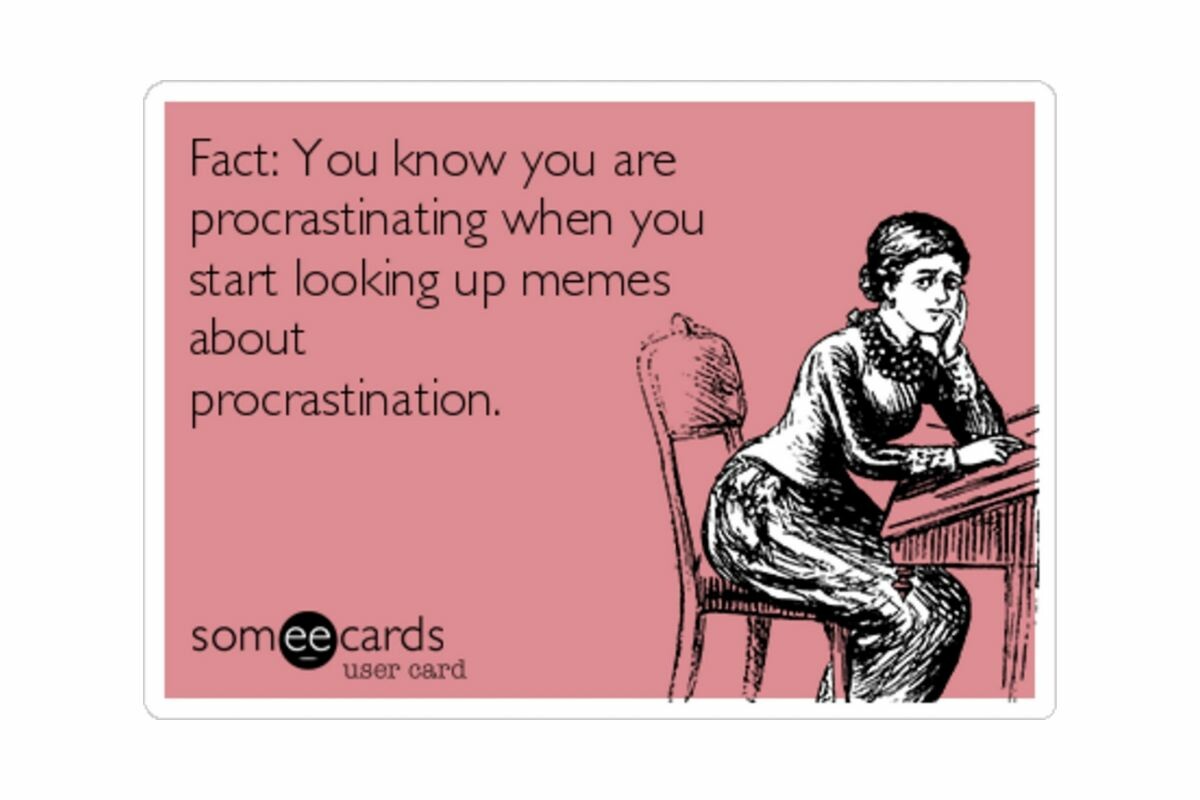
Are you a procrastinator? Many of us have the tendency to put things off and no matter how often we beat ourselves up over waiting to the last minute to pack for a vacation, book a flight, or file our taxes and struggle to get it all done in time, we keep doing it again and again. If you’re ready to finally beat procrastination and get ahead of the game, you’re in the right place.
Over the course of seven blog posts, I’m going to share my best tips and strategies for overcoming procrastination with you and we start today with - Forgiveness. I know it seems like a strange place to start, but it’s an important first step. Here is why forgiving yourself for procrastination should always be the first step.
Here's the thing. There's nothing you can do about the past except learn from it. Beating yourself up about not following the plan you made for reaching a goal does you no good. Quite the opposite actually. If you stress yourself out and engage in negative self-talk, you make it worse. Those feelings of anxiety will enforce your habit to procrastinate again the next time.
The next time you find yourself procrastinating, tell yourself that it's okay. It's not the end of the world. Say it out loud and then promise yourself to try to do better. Trying is the important keyword here. You're working on mastering a new skill and changing a habit. That takes practice, time, and often failing a few more times, too. Remember, it's part of the learning process.
You may feel frustrated at times about your lack of progress. It's normal. If you can, tap into that frustration and use it to motivate you. Vow to try again and do better. Look at your mistakes. What caused you to procrastinate this time? Learn from it and you will start to do better.
Maybe there's a big task and you started strong, chipping away at it a little at a time. Then you missed a day, and another. That's okay. Not great, but okay. You did well for a while. It's good practice and maybe this particular experience taught you that you can't allow yourself to skip more than one day on an ongoing project.
There's always something new to learn whenever we fail at something or slip back into a bad habit. At the very least we figure out that something isn't working for us. Maybe you do better with three to-do's per day. The Oola Framework is a great way to get better at setting goals and getting three action steps done a day with the Action Tracker.
Forgive yourself for procrastinating so you can move on and practice some more. But, the trick is to move on and keep working at it. Don’t give up.
Tell us - Are you a procrastinator? I am when it comes to doing the dishes. What things are you most likely to procrastinate about?
Over the course of seven blog posts, I’m going to share my best tips and strategies for overcoming procrastination with you and we start today with - Forgiveness. I know it seems like a strange place to start, but it’s an important first step. Here is why forgiving yourself for procrastination should always be the first step.
Here's the thing. There's nothing you can do about the past except learn from it. Beating yourself up about not following the plan you made for reaching a goal does you no good. Quite the opposite actually. If you stress yourself out and engage in negative self-talk, you make it worse. Those feelings of anxiety will enforce your habit to procrastinate again the next time.
The next time you find yourself procrastinating, tell yourself that it's okay. It's not the end of the world. Say it out loud and then promise yourself to try to do better. Trying is the important keyword here. You're working on mastering a new skill and changing a habit. That takes practice, time, and often failing a few more times, too. Remember, it's part of the learning process.
You may feel frustrated at times about your lack of progress. It's normal. If you can, tap into that frustration and use it to motivate you. Vow to try again and do better. Look at your mistakes. What caused you to procrastinate this time? Learn from it and you will start to do better.
Maybe there's a big task and you started strong, chipping away at it a little at a time. Then you missed a day, and another. That's okay. Not great, but okay. You did well for a while. It's good practice and maybe this particular experience taught you that you can't allow yourself to skip more than one day on an ongoing project.
There's always something new to learn whenever we fail at something or slip back into a bad habit. At the very least we figure out that something isn't working for us. Maybe you do better with three to-do's per day. The Oola Framework is a great way to get better at setting goals and getting three action steps done a day with the Action Tracker.
Forgive yourself for procrastinating so you can move on and practice some more. But, the trick is to move on and keep working at it. Don’t give up.
Tell us - Are you a procrastinator? I am when it comes to doing the dishes. What things are you most likely to procrastinate about?
Check out my other blog content here: https://cathrynknock.com/blog

With intermittent fasting you typically only eat one meal per day. It’s important to pack as much nutrition as possible into that one meal, by combining lots of healthy foods with just enough indulgence to keep you going until the next meal comes around. That’s why it is important to have everything on hand to prepare a balanced meal when dinner time rolls around.
The best way to insure that happens is to plan your meals ahead of time. If you’re already familiar with meal planning you’ll be pleasantly surprised how quick and easy the process of planning and preparing your meals becomes when you’re only cooking once per day.
Intermittent fasting is a great way to improve your health and lose weight, but when you’ve been fasting all day, it’s easy to undo all the good you’ve done if your daily meal consists of junk food and sweets. Instead, make an effort to eat a healthy and balanced meal. Fill your plate with plenty of salad and veggies, healthy fats and a good source of protein Then round it out with a few treats you’ve been looking forward to all day. This way you can indulge in a handful of potato chips or a small slice of cake instead of ravenously finishing up the whole bag or way too much cheesecake when it’s time to eat.
Here’s how I go about planning my meals. I start with a healthy main dish. That could be grilled chicken, fish, a steak or even a burger. Soups or a bowl of chili are favorites in the winter time. I may even fix my favorite pasta dish every once in a while. Next I plan on having a large portion of steamed veggies or a big salad along with another side dish if needed. That’s what goes on my meal plan and everything I need for the week goes on my shopping list. This makes it easy to shop. I know I have everything in the house to cook my healthy meals at night.
Of course a few treats for dessert are fine as well. If your main goal is to lose weight, you want to stick to low carb options with your main meals in general and treats in particular. Dark chocolate, dill pickles and smoked almonds in moderation are all good choices. If your body can handle the natural sugars, some fresh fruit is another great option. Sliced bananas topped with a little heavy cream or whipped cream are a delicious treat.
You might find it helpful to plan in your treats and desserts as well and only by a few small things. Not having a lot of food, particularly anything you tend to crave, is a good way to keep temptation to cave at bay when you’re fasting during the day. Of course it will also keep you from overindulging when it’s time to eat.
Give it a try and see if planning and prepping your meals ahead of time makes it easier for you to stick to your intermittent fast.
Check out more of my blog here: https://cathrynknock.com/blog
The best way to insure that happens is to plan your meals ahead of time. If you’re already familiar with meal planning you’ll be pleasantly surprised how quick and easy the process of planning and preparing your meals becomes when you’re only cooking once per day.
Intermittent fasting is a great way to improve your health and lose weight, but when you’ve been fasting all day, it’s easy to undo all the good you’ve done if your daily meal consists of junk food and sweets. Instead, make an effort to eat a healthy and balanced meal. Fill your plate with plenty of salad and veggies, healthy fats and a good source of protein Then round it out with a few treats you’ve been looking forward to all day. This way you can indulge in a handful of potato chips or a small slice of cake instead of ravenously finishing up the whole bag or way too much cheesecake when it’s time to eat.
Here’s how I go about planning my meals. I start with a healthy main dish. That could be grilled chicken, fish, a steak or even a burger. Soups or a bowl of chili are favorites in the winter time. I may even fix my favorite pasta dish every once in a while. Next I plan on having a large portion of steamed veggies or a big salad along with another side dish if needed. That’s what goes on my meal plan and everything I need for the week goes on my shopping list. This makes it easy to shop. I know I have everything in the house to cook my healthy meals at night.
Of course a few treats for dessert are fine as well. If your main goal is to lose weight, you want to stick to low carb options with your main meals in general and treats in particular. Dark chocolate, dill pickles and smoked almonds in moderation are all good choices. If your body can handle the natural sugars, some fresh fruit is another great option. Sliced bananas topped with a little heavy cream or whipped cream are a delicious treat.
You might find it helpful to plan in your treats and desserts as well and only by a few small things. Not having a lot of food, particularly anything you tend to crave, is a good way to keep temptation to cave at bay when you’re fasting during the day. Of course it will also keep you from overindulging when it’s time to eat.
Give it a try and see if planning and prepping your meals ahead of time makes it easier for you to stick to your intermittent fast.
Check out more of my blog here: https://cathrynknock.com/blog
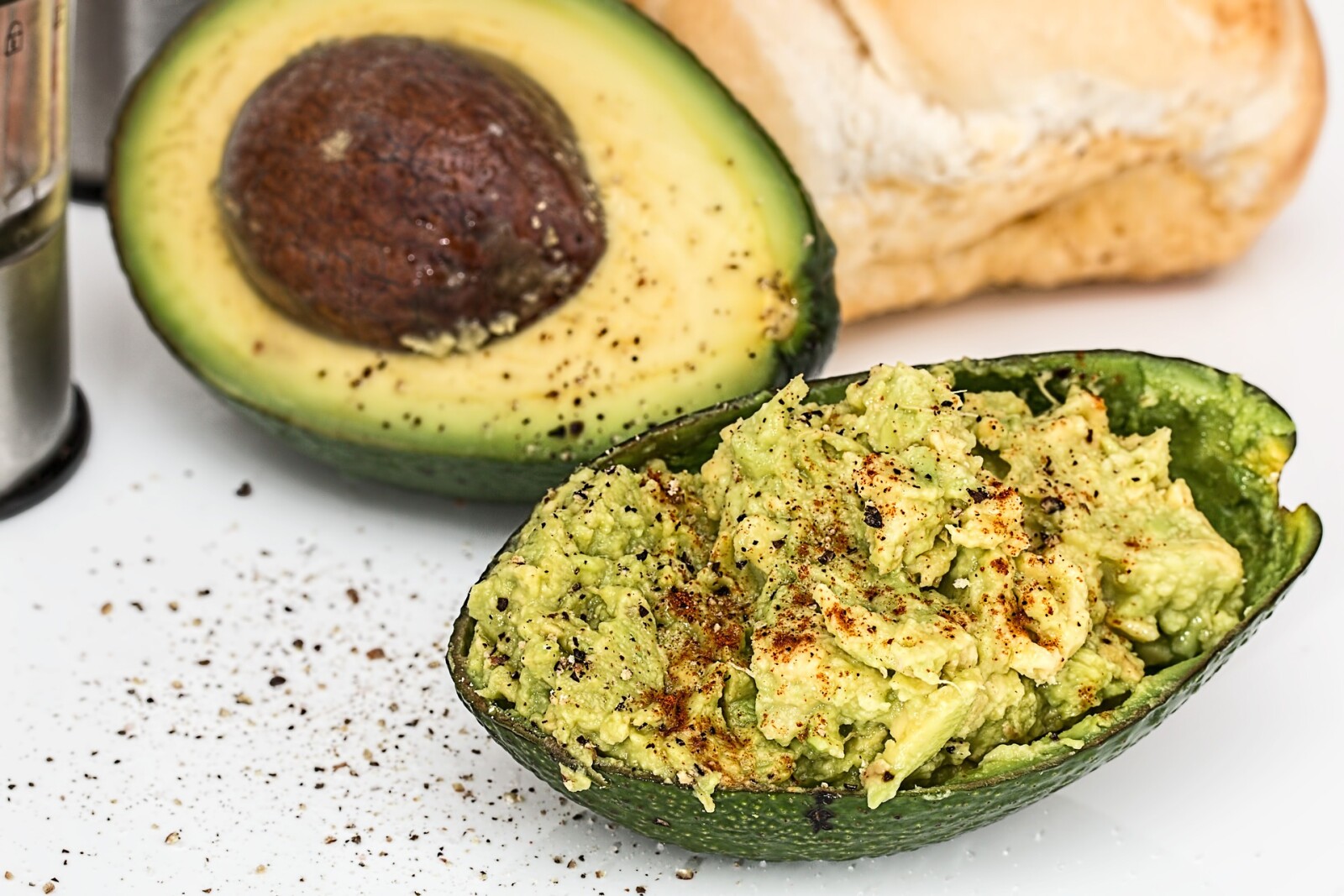
There’s A Reason We Call It Breakfast - How to Break Your Fast
We talk about breakfast all the time. And if you believe your mom, breakfast is the most important meal of the day. It isn’t but that’s a topic for another day. For now, let’s talk about the word itself and its origin. When you break it down its break - fast, or breaking your fast. It’s the meal you eat to break your fast and when you think about it, we all fast a little each night. We make it for 10 - 14 hours without food from the time we eat dinner to the time we eat breakfast.
And breaking your fast is an important part of any fast. It doesn’t matter if you’re intermittent fasting or doing on a long traditional fast. Eventually you need to break it and start eating again. And what you eat makes a difference depending on how long you’ve been fasting.
BREAKING YOUR INTERMITTENT FAST
This is the easiest fast to break. You’ve only gone without food for a few hours, basically just pushing back breakfast by a few hours. Or maybe you’ve fasted for a full 24 hours with nothing but a little Topo Chico to sustain you. In either case there aren’t a lot of rules to follow.
Just make sure you don’t eat too fast when you start your main meal. Take it slow and give your body a chance to tell you when you’re full. Since you’ll be skipping some meals it’s also important to pack all the nutrition into the meals you do it. Start with plenty of veggies, add in a quality source of protein and then round it out with the foods you’ve had on your mind while you were fasting.
If you’re sticking to an intermittent fast to lose fat, limit the carbohydrates and sugars in particular as much as possible. You don’t want to cause your insulin to spike and load up your liver with glycogen that you have to burn through before your body can shift back into fat burning mode.
BREAKING A 36-42 HOUR FAST
If you are fasting for longer periods, you also want to start things slow. Break your fast with a cup of broth or some thin soup. Stick to a salad next and slowly start to introduce more solid foods.
Even during a relatively short fast, your digestive system starts to slow down. You don’t want to overwhelm it with a bunch of hard to digest food. Start slow and listen to your body.
Breaking your fast the right way will make sure you get the best benefits possible from your fast and it allows your body to adjust to food in a painless and healthy way.
Check out the rest of my series at: https://cathrynknock.com/blog

5 Tips To Help Distract You From Food During Your Intermittent Fast Time
Intermittent fasting isn’t hard to do, but we all have days that are harder than others. As a general rule of thumb, the first few weeks will be the toughest to get through. After that your body (and your mind) will be used to not eating during your fasting hours.
That said you’ll occasionally have days that are tougher than others. Most of the time it’s little mind games we play. We tell ourselves that we are hungry, not feeling well, bored, sick, and we just need a little food to make it all better. And those thoughts are enough to get the hunger pangs started.
The key to getting through those days is to distract yourself until it’s time for your next meal. Here are five tips to help you do that.
TIP #1 - STOP STARING AT THE CLOCK
The first thing you need to do is to stop staring at the clock. Time moves much slower when you’re watching the seconds tick by. Don’t even allow yourself to look at the time. Go do something else. Anything!
Get some work done, call a friend, go clean the bathroom, or walk the dog. It doesn’t matter. But whatever you do, don’t look at the clock for a good long while.
TIP #2 - MAKE A CUP OF TEA OR COFFEE
The ritual of making a nice cup of coffee or tea can calm and center you. Take your time and make it last. Then curl up and enjoy that cup. Not only will it help you pass the time, it also fills your belly and that may be just what you need to make it through those last few hours until it’s time for breakfast / lunch.
TIP #3 - GET OUT OF THE HOUSE
Sometimes one of the best distractions is a change of scenery. Go get out of the house. Run some errands, head to your local park with a blanket and a good book, meet a friend for coffee or just head into the back yard for some gardening.
TIP #4 - LOSE YOURSELF IN A GOOD BOOK OR MOVIE
Do you have a book or audiobook that you love? How about a Movie or Netflix Series? Find something you can lose yourself in and use it as a last resort distraction for those days when you can’t get anything productive done or you’re ready to relax and make it through that last hour or two of your fast.
TIP #5 - EXERCISE
Last but not least, get some exercise. Go for a walk, head to the gym, practice yoga, or dance to a Zumba DVD. It doesn’t matter. Not only will you pass the time while burning more fat but, exercise also releases endorphins that will make you feel better.
I hope you’ve found these tips helpful. Do you have some ideas of your own? What’s your favorite way to distract yourself before it’s time to eat again?

What Is Ketosis
One of the reasons intermittent fasting works so well for weight loss is because of a process called Ketosis. If you have ever been on a low carb diet you know that ketosis is a good thing.
If you’re a diabetic, you may confuse it with something called ketoacidosis which is a serious health issue and not something to take likely. If you are diabetic, this is definitely something you should address with your doctor.
Ketosis on the other hand is a good thing. It means your body is burning fat for energy. When that happens, ketones are released as a by-product. They can give you a bit of bad breath, and they are flushed out through your urine. For the bad breath I recommend a drop of a dietary safe Peppermint essential oil. Holler if you need me to help you get your hands on some.
Burning body fat for energy and ketosis are natural processes. If your body has a mechanism for storing body fat, doesn’t it make sense that it also has one to access the energy stored in those fat cells as well? Going through periods of famine has long been part of our human history and the reason we store fat so well in the first place.
Fasting and eating low carb are two great ways to get your body into ketosis and burning fat. That’s why both of them are so effective in helping you lose weight. And if you really want to supercharge your fat loss, combine the two.
It’s easier to do than you may think. Fast for 16 hours per day (let’s say from 7pm when you finish dinner until 11am the next day) and then stick to low carb food during your feeding hours.
Ketosis has one big side effect that will help you stick to your weight loss plan. After fasting and eating low carb for about 3 to 4 days you’re deep into ketosis. And then something amazing happens. Hunger and food cravings simply go away. Ketosis is one of the best appetite suppressants I’ve come across and it makes sticking to this way of eating so much easier.
As insulin goes down and ketones go up, your body also starts to release more adrenaline and human growth hormone. Both of those work together to give you plenty of energy and keep your metabolism running high. You won't feel tired or sluggish after the first few days. Instead you’ll have more energy and you may even want to head out for a little fresh air and exercise (gasp). Now that’s what I call a powerful weight loss combination. And it all starts with Ketosis.
Check out more of my IF series on my blog at https://cathrynknock.com/blog..

How To Help Your Body Get Into Ketosis Faster During Your Fast
When you fast your body starts to switch from burning primarily carbohydrates for energy to burning body fat (which is why fasting is such a great way to lose stubborn body fat). When you’re switching to burning fat, you go into ketosis which are flushed out in your urine.
The switch from burning sugar to burning fat isn’t always easy. For some of us it has nasty side effects like headaches, body aches and feeling tired and nauseous. That doesn’t sound like a lot of fun, does it? The good news is that the effect is very temporary and over the course of a couple of days you’ll feel much better.
There are, however, some things you can do to speed up this process and ensure that you have fewer or even none of the yucky side effects. Those symptoms by the way are sometimes called “keto flu”. Don’t worry, it isn’t an infection or illness… it can just feel like you may be coming down with the flu.
So let’s talk about how to avoid this tough transition period. Instead of jumping from your regular diet straight into a fast or a very low carb high fat diet, take a week to prepare your body. It will be time well spent and don’t be surprised if you find yourself losing weight and feeling better during this time.
Start by cutting out all sugar and limiting how much fruit you eat. That alone will help, but you can take it even further. Give your body a few days to get used to the lack of sugar, then start to cut back on other carbohydrates starting with refined carbs in things like pasta, pizza, bread and even white rice. Instead eat plenty of fresh veggies, meat and some healthy fat.
This will help prepare your body to switch from burning carbs and sugars for energy to using fat - body fat in particular to keep your energy up and keep you moving. Make sure you drink plenty of liquids - preferably calorie free ones, and definitely no soda or juices. This will help you stay hydrated and it will alleviate things like headaches from sugar withdrawal.
Don't be surprised to notice a nice side effect of preparing your body for fasting. You’ll be losing weight and feeling better as you wean your body off sugar and refined carbs. If you ask me, that alone is worth getting your body ready for fasting and ketosis.

How Intermittent Fasting Can Help You Live Longer
There’s been a lot of talk about intermittent fasting and the health benefits of fasting. There’s even been some research that suggests that fasting can help us live longer. I’m sure you’ve heard about the study of mice that were put on a very calorie restricted diet and they tended to live much longer lives. (we however are NOT setting out to specifically calorie restrict!!!!)
There are even people who stick to very low, strictly plant based diets in an effort to extend their lives. They function on the least food possible; being very careful about what they eat to make sure they get the most nutrition possible from the least amount of calories. I don’t know about you, but that doesn’t sound like a lot of fun.
Does that mean you should be starving yourself? Absolutely not. From what I’ve read, you can get many of the benefits of fasting and low calorie living with intermittent fasting. Some interesting things happen in your body if you stop feeding it three meals and several snacks per day.
Here’s the thing. It isn’t natural for us to have a constant and steady supply of food at all times. And it really isn’t natural to have carbohydrates and sugar constantly in our body. That’s what’s causing weight gain, excess body fat, obesity, metabolic syndrome and eventually diabetes and a slew of health issues.
There are a couple of positive things that happen in our bodies when we go back to the old famine and feast ways of eating. A lot of it has to do with insulin. I’m sure you’ve heard by now that insulin has a lot to do with diabetes and obesity. Insulin is a hormone that is involved in converting sugar and carbs into body fat. On the flip side, we can’t burn body fat as long as insulin levels are high. Instead our metabolism shuts down and we crave sugary food until we give in and feed the insulin monster.
An effective way to cut into that vicious cycle is to simply fast. By fasting even for a few hours, we give insulin levels in our body a chance to go down and we can start to burn body fat for energy. It takes about six hours of not eating before insulin levels will start to drop. Do you see how eating three meals and a few snacks in between can be a problem and add to the obesity epidemic we’re facing?
Fasting helps us start to burn body fat and helps us reverse the negative effects of being overweight. That alone is a plus, but the benefits don't stop there. When we don’t eat, human growth hormone levels start to rise in our bodies. Plus our cells are busy starting to do internal repairs and our body releases adrenalin to keep our energy up. It only makes sense when you think back to our hunter and gatherer days. When there was no food, we needed a way to stay in shape so we can go out and find food. Fasting actually helps us keep in shape and thus helps us live longer and healthier lives.
We may not understand all the internal mechanisms and everything that’s going on yet, but don’t you think it’s worth a try. You may live longer and even if you don’t, you’ll feel better and have more energy to boot.
Which picture below do you want to be? What kind of 85-year old? One who is fit and having a great time in their golden years, or one in an assisted living facility?
 Fit at 85
Fit at 85OR
 Needing a Walker and Helper?
Needing a Walker and Helper?I know what I choose!
You CAN have it too. Book a call with me today to find out how.Book A Call!
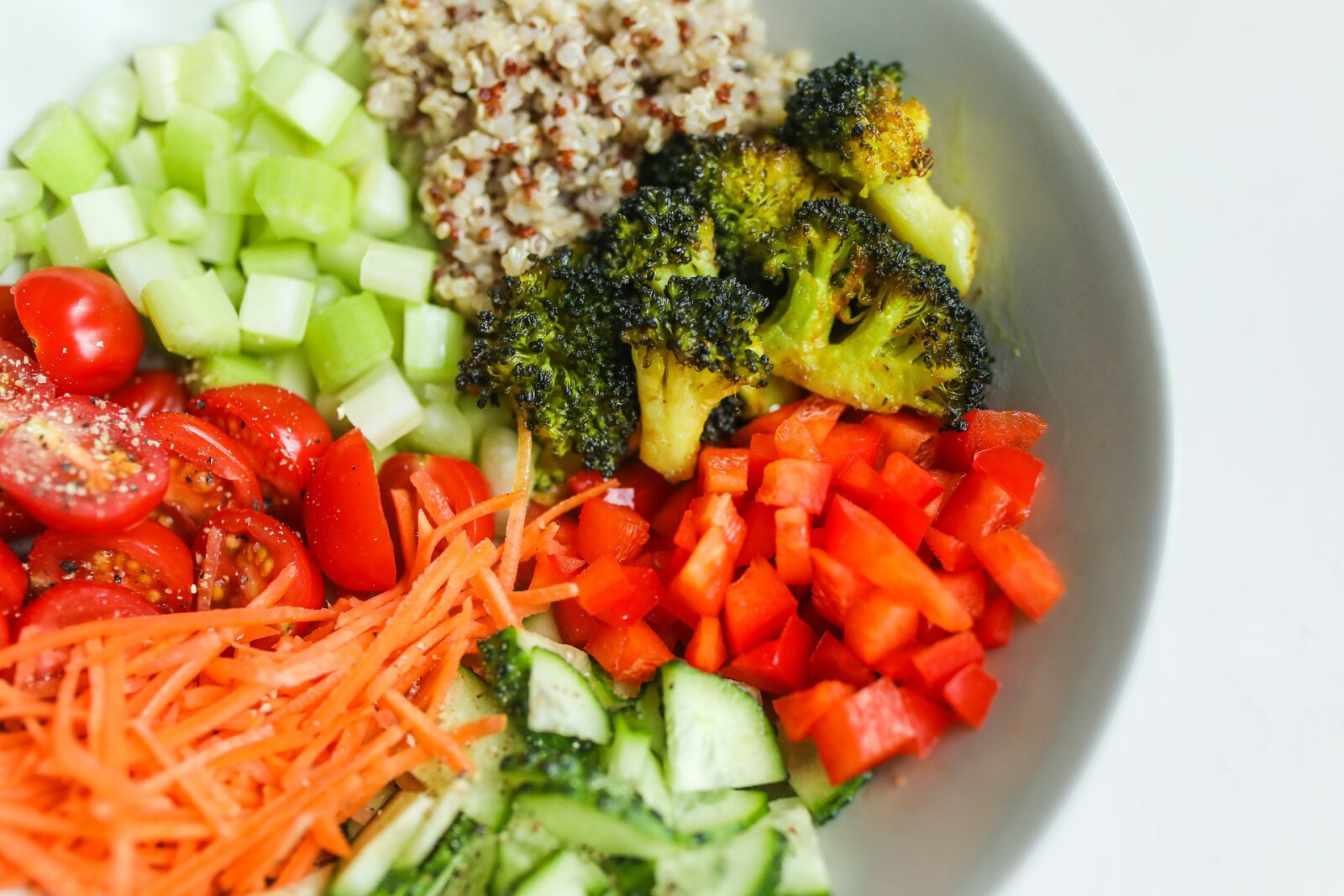
The 16/8 Method: You Can Go Without Food for 16 Hours
One of the easiest ways to fast is to simply cut out food for a big part of your day. This works particularly well when you have a busy day full of things to do and you need to be able to continue to work hard and stay on top of your game. The idea is simple. You fast for 16 hours per day and fit two meals or a meal and a snack into an eight hour period.
16 hours may seem like a long time, but when you figure in the fact that you spent about 8 of those hours sleeping, it doesn’t seem as daunting anymore. Most of us eat dinner a few hours before we go to bed. That adds a few more hours to the clock. If you are also one of those people that can’t or don’t eat breakfast first thing in the morning, you’re all set. Fasting for 16 hours will be easy-peasy for you.
If you are a breakfast eater and typically wake up hungry in the morning, I promise you that it won’t take you long to adjust to making do without food for the first few hours of the day. Try this. Make yourself wait for an hour or two before you eat. An easy way to do this is to just have black coffee while you get ready in the morning. Keep busy and make yourself wait until you get to the office before you eat. After a week, push your breakfast or first meal back by another hour. Keep going until you can comfortably fast for 16 hours or longer at a time.
Before long you will find yourself consuming only two meals per day. And don’t be surprised if you only eat once as you get used to intermittent fasting. One large meal in the late afternoon or evening along with a big cup of black coffee or tea in the morning is a comfortable way of fasting and eating for many.
Contrary to popular belief, breakfast is not the most important meal of the day and you don’t need to eat three to six times per day to keep your energy up… that kind of thinking leads to the obesity epidemic we’re facing today. Intermittent fasting may just be the solution we need to reverse it.
Did you know I have a course that helps you learn how to intermittent fast safely and effectively and helps you break through diet mindset that has been holding you back by giving you one-on-one and group coaching sessions? Well, I do.
Are you ready to get started? Book a call and Find Out Moretoday!
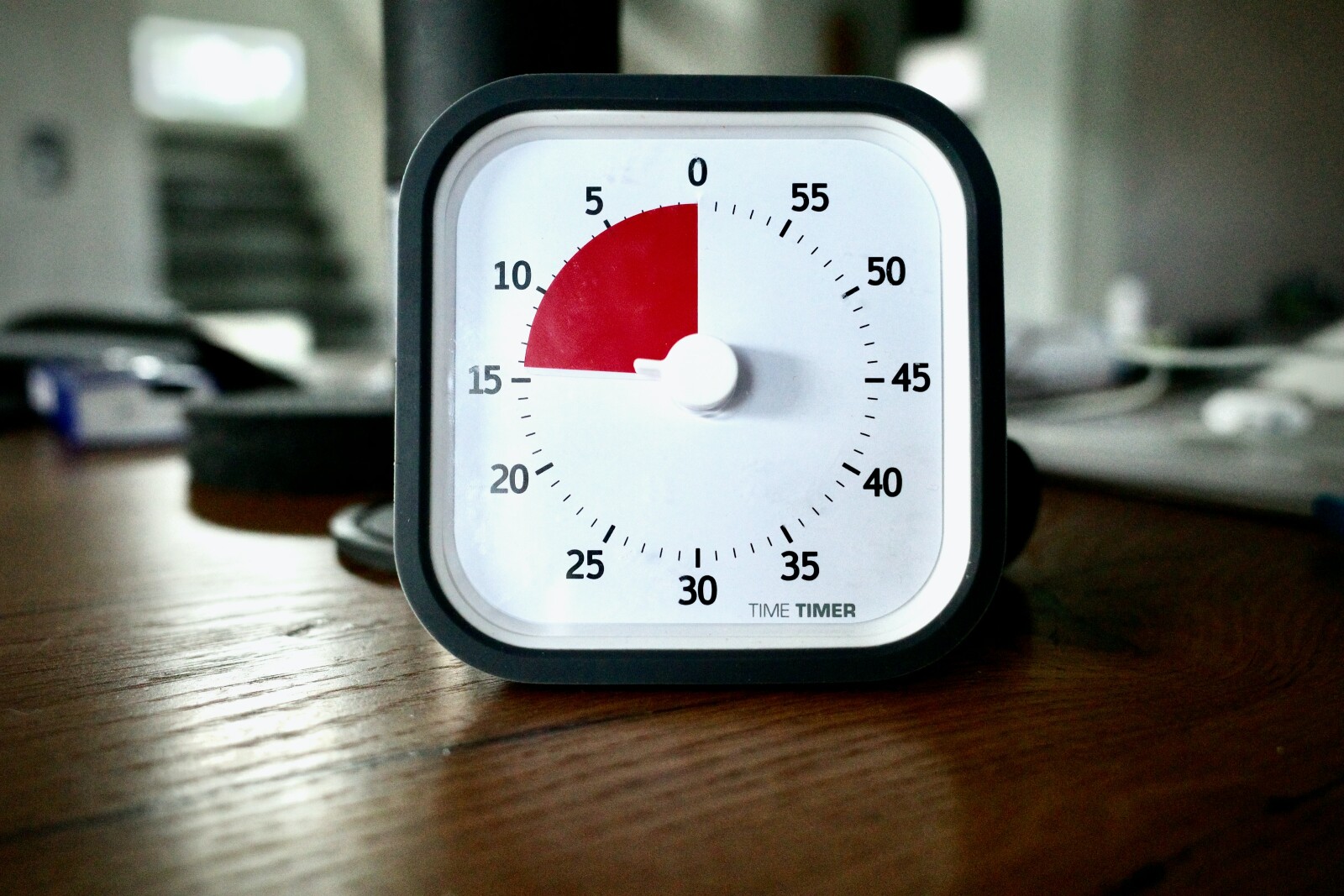
Time-Restricted Eating (TRE)
There are several different ways to intermittent fast. Many people follow a time restricted eating (TRE) approach. These are the 16/8, 18/6, 19/5, 20/4 approaches where the first number is the number of fasting hours and the second number is the number of hours of feasting.
Yep, we call it feasting, because as you go along you will find that you will gravitate toward higher quality foods. We call the feasting time our "window". Another common term in the IF community is "window worthy". You'll start to look at food differently and rate it on if it is "window worthy" and if not, you'll find it is super easy to just not eat it.
I used to think Chinese food would always be window worthy. But the last time I ordered from my normal restaurant I was so disappointed. And here's the thing. The food was the same it has always been. But I'm different, and what tastes good to me now has drastically changed.
The biggest change - I used to love flavored coffee creamers in my coffee. Now they taste exactly like what they are - liquid chemicals.
Don't worry if this hasn't happened for you yet. Every body is different, and when you notice changes may be different than when I noticed changes.
Just keep with it. The results in the long run will be well worth it.
Haven't started an intermittent fasting lifestyle yet? Do you need more information? Check out these two books that literally changed my life: Delay, Don't Deny and Fast. Feast. Repeat.
I also have a coaching practice where I walk with you every step of the way to help you. Book a Discovery Call with me today and let's find out if this way of life is right for you.
Disclosure: This site contains affiliate links to a few select products I use, enjoy, or recommend. I may receive a small commission for purchases made through these links, and your purchase supports companies and products I believe in.

Let's get started learning about some of the basic benefits of fasting in this new series with our first installment, Spiritual Benefits of Fasting.
Fasting has a long tradition in many religions as a way to worship.
I've personally never been part of a religion or spiritual practice that specifically focused on fasting, although many within the community may have done it. However, millions, probably billions around the globe fast for spiritual reasons.
And it totally makes sense now that I know what I know about fasting and how it makes my mind so much more clear. I can imagine when practicing reflection how powerful fasting can be to help you get more in touch with your higher purpose.
I've personally never been part of a religion or spiritual practice that specifically focused on fasting, although many within the community may have done it. However, millions, probably billions around the globe fast for spiritual reasons.
And it totally makes sense now that I know what I know about fasting and how it makes my mind so much more clear. I can imagine when practicing reflection how powerful fasting can be to help you get more in touch with your higher purpose.
Some main benefits of fasting for spiritual reasons are:
- fasting releases your body from the task of digestion and gives your body time and energy to focus your mind more on contemplative action
- fasting instills discipline over your life and desires
- fasting can strengthen your resolve when integrated with prayer or meditation
- fasting can remind of us our human frailty and remind us that we need something more than just the material things in our lives
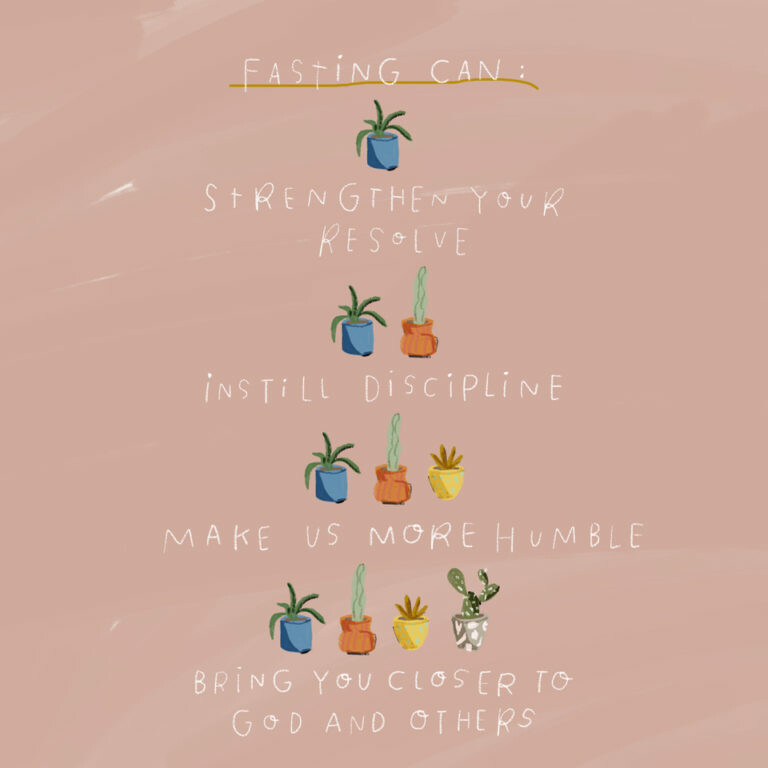
Have you ever fasted for spiritual reasons? If so, what is your favorite part? Do you think learning more about fasting in general could help your spiritual fasting be more successful?
Check out some of the other articles in my series on fasting:
Disclosure: This site contains affiliate links to a few select products I use, enjoy, or recommend. I may receive a small commission for purchases made through these links, and your purchase supports companies and products I believe in.


